Nothing Found
Sorry, no posts matched your criteria
Sorry, no posts matched your criteria
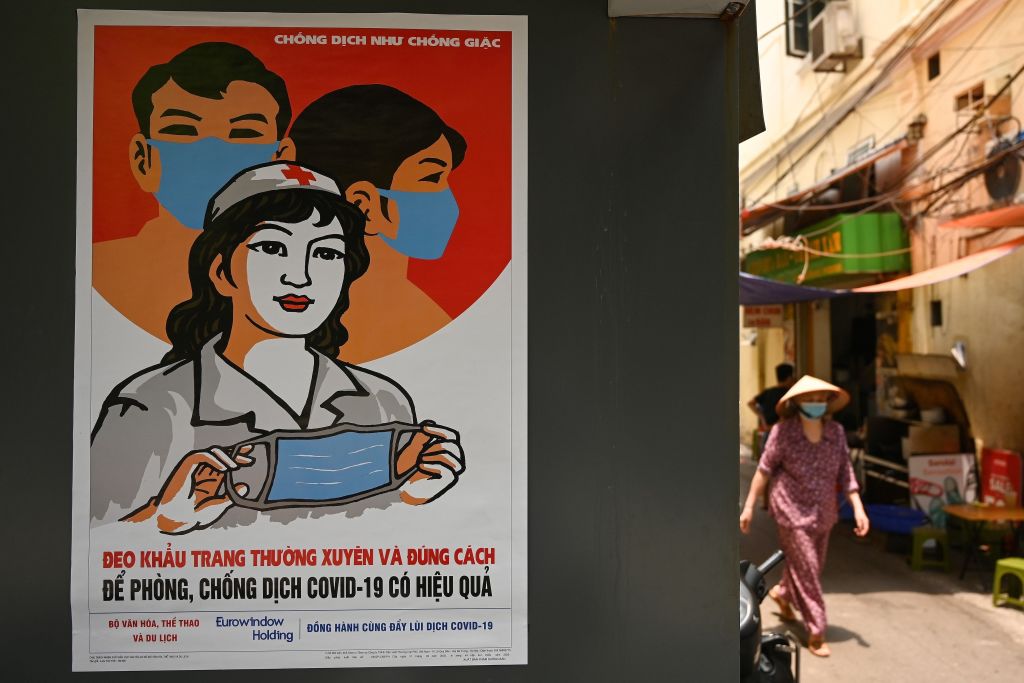
A year since the pandemic abruptly changed all aspects of our lives, how has Covid-19 affected Southeast Asia and what lessons can we draw at this point? Here I offer three key observations that provide a way to look at the overarching impact of the pandemic on the region.
Covid-19 is a true disruptor on all levels.
There is no good time for a pandemic, but the world arguably was less prepared than it should have been for this one—not because we haven’t experienced plagues before or because we didn’t imagine a global pandemic like this one, but because we preferred to think about the threat in the abstract rather than in practical terms as an inevitability.
The response to the coronavirus crisis has become a measure by which political systems are judged—which systems dealt with it best, which governments fared better in securing medical services and supplies, who’ll win in the vaccine race, and who has been able to influence global health institutions.
The pandemic is not just an ‘accelerator’. It has introduced profound changes on many levels. Each country’s economic strength, confidence and power will be affected in the post-Covid world, which in turn may shift the hierarchy and balance in Southeast Asia. Resource nationalism and vaccine nationalism, for example, not only will affect the physical recovery of Southeast Asian nations, but also could play a role in determining the future alignment of regional politics.
Southeast Asian nations must not misjudge just how significant this juncture is. If they do, they are likely to respond inadequately to the challenges and may miss the opportunity to assert their positions and interests in this critical time.
Every single choice has consequences.
For Southeast Asian governments, non-alignment is an option, provided that it’s truly a conscious national strategy. But rhetoric alone is not a strategy. Countries in Southeast Asia, to varying degrees, show a level of conviction that they’ve lived with the China threat for a long time and are able to muddle through, or even turn the threat into an opportunity.
Southeast Asian diplomatic elites tended to blame the United States under the Trump administration and its unsophisticated diplomatic narratives for the increasing major-power tension and for ‘making them choose’. But that misdiagnoses the core of the problem.
Perhaps the biggest strategic contribution of Covid-19 is the lesson that when it comes to a global crisis, there’s no external protector, not in the form of the United States or China, or anyone else.
The region can no longer take a post–Cold War peace dividend for granted. Each and every Southeast Asian country needs to play its part in ensuring the evolving environment is most conducive for them to grow. Failing to recognise that, and missing the opportunity for strategic proactiveness, would reduce the avenues to exercise their own agency and sovereign rights.
The ability to multitask is crucial.
Policymakers can deal with big challenges and even crises, but it’s difficult for them to deal with many big challenges and crises at the same time. Multiple challenges can quickly become dangerous.
The pandemic has accelerated some pre-existing trends, but it has also drawn our attention away from many challenges. For example, the argument that the pandemic accelerated the authoritarian tendencies in some countries may be partially true, but it misses a more fundamental problem—authoritarian tendencies have been present and will remain present in Southeast Asia.
What’s missing is an effective enforcement mechanism, one that previously kept those tendencies at bay. And perhaps the bigger issue is the quality and standard of governance in the region, which will continue to pose challenges during the recovery from the pandemic.
Similarly, while Covid-19 has occupied just about everyone on the planet, our attention, resources and a sense of emergency have been taken away, at least for a while, from the threat of climate change. The climate crisis, however, will wait for no one, and Southeast Asia is one of the most vulnerable regions to its effects.
Climate change will have economic, political and social repercussions. The region is expected to be hit by increasingly frequent and severe floods, droughts, typhoons and other natural disasters. In a recent McKinsey report, almost all ASEAN states are listed as frontier countries for climate change. By 2050, in an average year, anywhere between 8% and 13% of GDP could be at risk in those countries due to rising temperatures and humidity.
The risk of extreme rainfall could increase three- or four-fold by 2050 in Indonesia. While flooding is a common occurrence in Vietnam’s Ho Chi Minh City, infrastructure damage could cost between US$500 million and US$1 billion by 2050, with knock-on expenses ranging between US$1.5 billion and US$8.5 billion.
When it chaired the 2020 ASEAN-centric summits, Vietnam was between two major typhoons that also claimed lives in the Philippines. In the wake of the pandemic, more national disasters will slow the path to recovery, even for those countries that have done relatively well with containing the virus. In the immediate post-Covid period, there will be a tendency to allocate resources towards economic recovery rather than the climate crisis as it may be considered as a less urgent issue. Again, that would be a major miscalculation with lasting consequences.
We all want to believe that when vaccines are widely available, the pandemic will be behind us and the world order will go back to ‘normal’. Some harbour hope that with Joe Biden in the White House, the US will return to more predictable and responsible global leadership and somehow stabilise geopolitics. But nothing has frozen in this critical, fast-paced period, and certainly not the power balance in Southeast Asia. To think that we will need to deal with these matters only after the pandemic is over would be a huge mistake.
If power corrupts, then crisis reveals. Indeed, this multilayered, global crisis has revealed that the great powers can’t always be relied upon to provide quality public goods or demonstrate true global leadership.
Southeast Asia must come to terms with the fact that it can’t count on any single great power to help it with the many challenges the region faces. And while smart alignment politics are needed, it is individual proactiveness that will determine how the region can not just adapt to the emerging new order, but help to shape it. Now is the time for Southeast Asia to exercise agency.

Anastasia Kapetas, The Strategist’s national security editor, speaks to Emma Herd, CEO of the Investor Group on Climate Change, about the Climate League 2030 initiative, a private-sector-led initiative committed to deeper emissions reductions for Australia. They also discuss climate investment and the significant rise in funding for renewable energy.
ASPI Executive Director Peter Jennings speaks with James Goldrick, adjunct professor at UNSW Canberra with over 35 years’ service in the Royal Australian Navy. They discuss ASPI’s latest special report, Submarines: Your questions answered, and delve into the complexities of Australia’s submarine program.
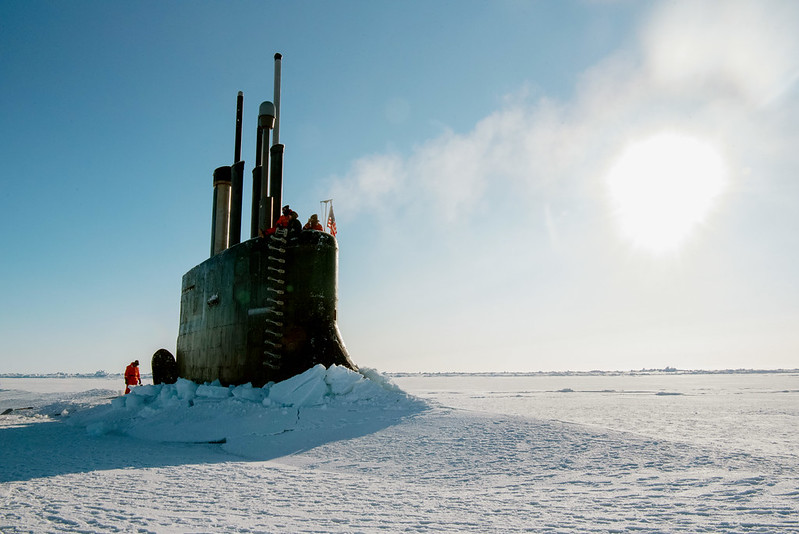
Whether we are heading for a future of cooperation or of increasing confrontation in the Arctic remains to be seen. But it’s already clear that the region will command far more attention than it has in the past.
The main reason is of course climate change, which is accelerating the rate of ice melt and causing Arctic temperatures to rise twice as fast as the global average. Owing to their pace and scale, these changes have obvious geographic, economic and strategic implications. As the vast ice sheet that spans the region has melted, new fossil-fuel reserves and shipping routes have opened up, including the Northern Sea Route (NSR) along Russia’s Siberian coast and the Northwest Passage through Canada’s northern archipelago. However, the same trend has also fuelled the loss of permafrost, threatening billions of dollars’ worth of infrastructure that may soon be standing in mud instead of on firm ground.
Indigenous communities that have lived in the Arctic for millennia are increasingly voicing concerns about the growing threat to their livelihoods. Nearly half of the Arctic’s land area is in Russia, as are around 70% of the four million people who live in the region. Most live in the Kola Peninsula area near Norway and Finland, which is also home to Russia’s Northern Fleet and most of its sea-based nuclear deterrent. But other parts of the region are no less important, strategically and demographically. Approximately two-thirds of the inhabitants of Canada’s Arctic areas are indigenous people, as are the vast majority of the 56,000 people living on Greenland (which itself is the size of a small continent).
This summer, a century-old sailing ship, the Sedov, traversed the NSR without seeing any ice at all. Such journeys still are possible only during the warmest months, whereas transit throughout the rest of the year requires special ships, often escorted by powerful icebreakers. Nonetheless, the sea traffic has been steadily increasing, driven so far by the large energy projects that Russia is developing in Siberia. Chinese and French companies each have a 20% stake in liquid natural gas extraction from the Russian-controlled Yamal gas fields, and South Korean–built tankers are shipping this LNG to Europe—and soon will be supplying East Asia. Needless to say, many more projects are in the works.
Since 1996, the eight Arctic countries—Russia, Norway, Finland, Sweden, Denmark (Greenland), Iceland, Canada, and the United States—have cooperated through the Arctic Council, mostly to address environmental issues. But now that the Arctic is becoming an increasingly important global theatre, other countries are taking an interest.
In 2013, China, India, Singapore, South Korea and Japan were granted observer status within the council, in recognition of their scientific research commitments and interest in future shipping opportunities. The potential for trade could be massive: the Arctic sea route from Yokohama to Hamburg is 40% shorter than the current one that runs through the Suez Canal.
Perhaps inevitably, the new climate of great-power competition has increasingly affected Arctic issues. At the council’s ministerial meeting in the city of Rovaniemi in Finland last year, US Secretary of State Mike Pompeo shocked everyone when he refused to agree to a final communiqué and work program that mentioned climate change. The Trump administration instead used the occasion to attack China for its own designs on the region.
In May next year, Iceland will pass the council’s biennial rotating chairmanship to Russia, which is not likely to squander its two years in the driver’s seat. Over the past decade, the Kremlin has devoted significant resources to strengthening its Arctic positions, reviving defunct Soviet military facilities and building new ones. This military build-up has set off alarms within NATO, even though a sober analysis would find that in most cases, such facilities pose no particular threat to anyone—except, perhaps, polar bears.
Still, other points of contention do matter. Russia regulates all of the shipping through the NSR, and thus will enjoy outsize control for as long as other parts of the Arctic remain covered with ice. But as more ice melts, new shipping channels will open up well north of Russia’s jurisdiction, and this will introduce a slew of new legal issues.
In light of these looming issues, a recurrence of the type of confrontation that derailed the Rovaniemi summit would be most unfortunate. With the executive meeting of the Arctic Council taking place in Reykjavik next month, we will soon know what the future holds.
There are more than enough issues for the US, Russia, China and others to clash over nowadays. But all should recognise a shared interest in preserving and further developing an open, collaborative framework for the world’s northernmost region. One way or another, the Arctic will become an increasingly important theatre. It behoves us all to make it one of mutually beneficial cooperation, not war.
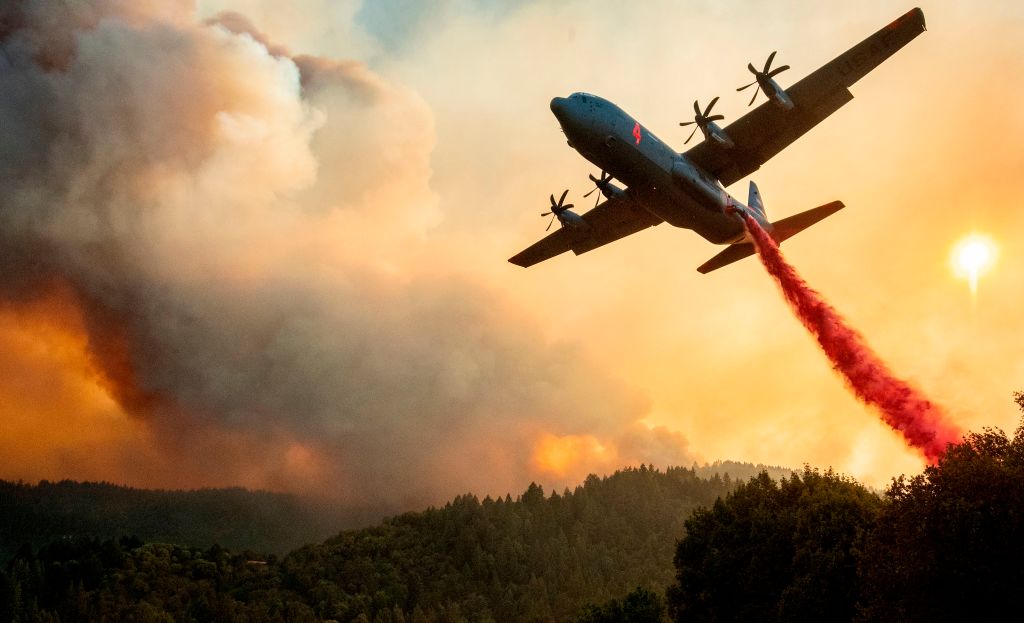
Of the many threats and challenges confronting the world, two stand out: the deteriorating relationship between the world’s two most consequential powers, and the looming reality of climate-induced catastrophe. Both require goodwill and real cooperation between the United States and China if they are to be addressed.
The odds are still against it, but there is one way in which the two problems could be addressed in combination to bring about the sort of ‘win–win’ outcome Chinese President Xi Jinping says he favours. It’s unlikely that US President Donald Trump will be sympathetic, especially in the midst of an election campaign, but if Democratic challenger Joe Biden wins he just might be interested in resetting relations with China.
Given the current rhetoric about the beginning of a ‘new cold war’, it’s worth remembering that at the height of the last cold war the US and the Soviet Union managed to negotiate a series of arms-control agreements that not only reduced the immediate danger of nuclear apocalypse, but opened up the possibility of reducing arms expenditure in the process.
The fact that such opportunities weren’t always embraced, and that the US in particular was determined to maintain its strategic dominance at all costs, shouldn’t blind us to the possibility that arms-control agreements offer a way of overcoming the notorious ‘security dilemma’, when states become caught up in futile arms races as they act on the assumption that their notional foes are just as paranoid and untrustworthy as they are themselves.
The intensifying rivalry and ill-feeling that has developed between the US and China is clearly damaging for them—not to mention the rest of us, as we impotently watch from the sidelines and try to conjure up plausible-looking foreign and strategic policies. One of the things Australia could do, however, is to encourage the ‘G2’, China and the US, to take a more constructive approach to their own bilateral relationship and concentrate on common challenges.
In this regard, no problem looms larger than unmitigated climate change. Despite being the world’s largest investor in renewable energy, China in particular is being badly affected by environmental degradation and climate change. Indeed, if there is one thing that really threatens the authority, legitimacy and even continuity of the Chinese Communist Party, it is unhappiness among the middle class about the environmental consequences of rapid development.
Consequently, China just might be interested in an arms-control agreement with the US, particularly if it were based on the assumption that both countries would use the money they saved by not buying new weapons to retrofit their domestic economies along more sustainable lines. This would, after all, allow China’s leaders to claim that they were playing a suitably pivotal role in global affairs while simultaneously addressing the greatest threat to their domestic legitimacy.
Plainly, Trump is unlikely to countenance such an idea, especially as it is designed to address a problem he doesn’t seem to think is real and probably doesn’t even understand. Whatever you may think about Xi’s authoritarianism and incipient megalomania, he does seem to get the basic science around climate change and recognise the threat it poses for any regime that fails to deliver promised improvements in the lives of the masses.
Plenty of people in the US understand the urgency of addressing climate change, too. Unfortunately, they’re not in the Trump administration, which makes the coming election perhaps the most important in the history of America—and perhaps the world. That may sound hyperbolic, but the scientifically informed jury on climate change is unambiguously in, and much of our planet may soon become uninhabitable if action is not taken quickly.
Given the scale of the changes that are needed to ward off the worst effects of even 2°C of warming (which now looks like a best-case scenario), a negotiated arms-control agreement that involves a commitment to drastically and immediately reduce emissions doesn’t look that outlandish. Indeed, if we can’t even collectively agree that this sort of relatively modest and unambiguously rational basis for cooperation is worthwhile, then there’s next to no chance of addressing the even bigger challenges that lie ahead.
It’s vital to recognise that the most immediate danger and ‘enemy’ that the US and China face is not each other but the common challenge of addressing climate change, which many now think threatens the very basis of human civilisation. The good news is that we really have no choice other than to cooperate on a hitherto unprecedented and unimaginable scale if we’re to get out of the hole we have dug ourselves into.
The bad news is that history suggests that international cooperation is not our collective strong suit—especially if the people who are supposed to be leading us don’t even recognise the nature of the problems we face.
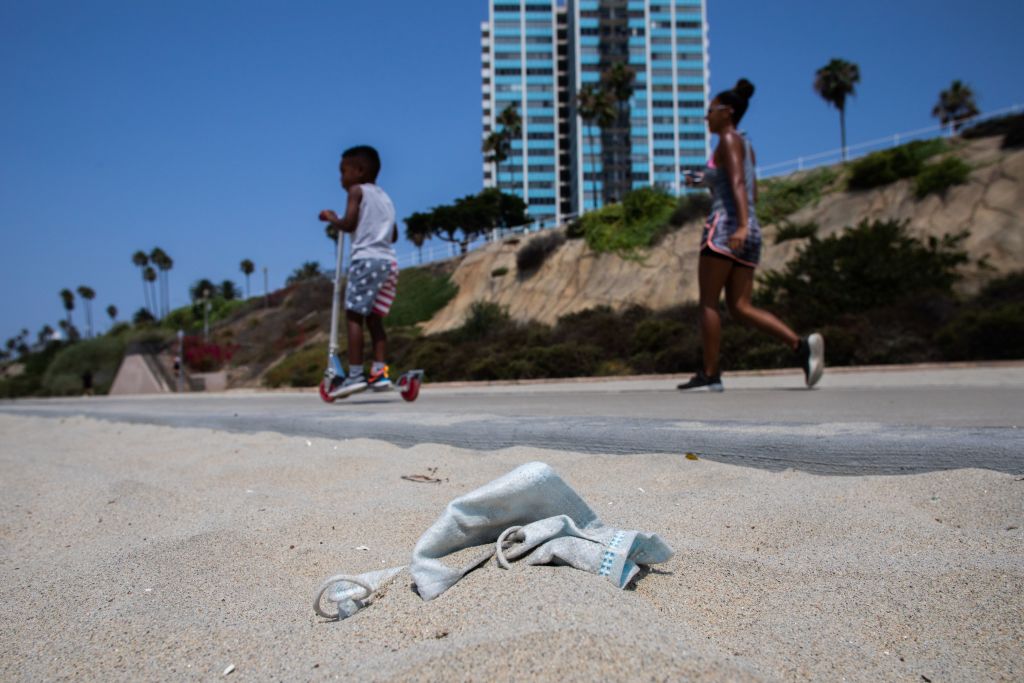
The same deep tension lies at the heart of the fight against Covid-19 and climate change, particularly in democracies. In each case, the measures necessary to save everyone entail costs that widen existing inequalities. At a time when the United States and other democracies need solidarity, the resulting civic turmoil and division are feeding (and being fed by) populism.
In the US, the disastrous response to the pandemic has exacerbated class, racial, ethnic and age divisions. Shutting down 60% of the economy for months, and then reopening it in an uneven state-by-state fashion, has pitted those who can work remotely and want to stay safe against those who cannot and thus regard public-health measures as tantamount to economic suicide.
The 40% of the economy that has remained open all along is staffed by millions of ‘essential workers’, who disproportionately comprise low-paid black and brown Americans. They are up to five times more likely than whites to be hospitalised for Covid-19, and—with more than 37,000 black Americans having now died from the disease—more than twice as likely to die. Intersecting these divides is the coronavirus’s differential impact on younger and older Americans, although jokes about Covid-19 being the ‘boomer remover’ have faded as every age group suffers deaths and serious health consequences.
Beyond the health effects, young people are paying a higher social, educational and economic price for the shutdown than older Americans. The unemployment rate among those aged under 34 is in the double digits, while McKinsey & Company estimates that the ongoing disruption to schooling will cost US$110 billion in lost annual earnings for today’s students. And these are just the consequences that can be measured.
None of this had to happen. America’s poor Covid-19 response is a failure of leadership, not governance. Other democracies—including countries as geographically diverse and culturally distinct as South Korea, New Zealand, Germany and Ghana—have kept infection rates under control so far. And although communist China is widely viewed as having responded better to the pandemic than the US, democratic Taiwan has done an even better job—and without suppressing information about the spread of the virus.
The fault lies with a particular kind of populist leadership that is abysmally evident in President Donald Trump’s administration but also plagues other countries, from Poland under the ruling Law and Justice, or PiS, party to the Philippines under President Rodrigo Duterte. Such leaders approach problems by blaming others, aiming to strengthen their support within a particular subgroup by fostering division.
That type of leadership undermines trust and makes it less likely that people will have sufficient confidence in authority and expertise to follow health guidelines. It also eschews and destroys any idea of shared sacrifice.
Therein lies the similarity between the responses to Covid-19 and climate change: faced with outsized and unexpected burdens and costs, everyone must commit to give up or pay something.
To be sure, solidarity is much harder to sustain when sacrifice is shared unequally. As with the current pandemic, the effects and costs of climate change are unevenly distributed within and across populations. Those who have benefited from the generation of wealth in the industrial age will not be paying anywhere near a proportionate share of the legacy costs in the 21st century.
But embracing solidarity offers a potential path forward for all democracies beset with racial and ethnic tensions, either among native populations or between self-described natives and immigrants. In his forthcoming book on ‘race, solidarity, and the future of America’, US Navy veteran and former White House Fellow Theodore Johnson defines national solidarity as ‘the civic version of the Golden Rule’, requiring that each of us ‘actively champion the right to equality and liberty’ for ourselves and our fellow citizens.
Johnson further argues that African-Americans and other minority communities have deep experience of solidarity. Michelle Alexander, author of The new Jim Crow, has similarly called for a ‘politics of deep solidarity rooted in love’.
Solidarity is both golden and necessary. The US, along with Japan, China, Russia and much of Europe, is struggling with a demographic imbalance, having too few young people to support a tsunami of retirees. But the US has a comparative advantage, because both immigration and a more diverse young population are contributing to economic growth.
Whites are already no longer a majority among Americans under 18. By 2027, they will cease to be a majority among those under 30, and by 2045 they will no longer be a majority at all. If America can make closing the racial equity gap its national mission, such that economic, educational and social disparities simply track America’s demography rather than being disproportionately concentrated in black and brown communities, it will open the door to huge and lasting innovation.
Throughout its history, American democracy has innovated to adjust to technological change, wars, pandemics and other shocks. Its persistence shows that a society governed by liberal principles, the rule of law and elected representatives can exist and thrive for centuries. As the US approaches the 250th anniversary of its founding, Americans need to embrace the country’s diversity as a source of strength and solidarity that will allow it to meet collective challenges at home and abroad.
The politics of populism is a politics of division, defining ‘the people’ whom populist leaders claim to represent against others—foreigners, elitists, cosmopolitans, globalists, urbanites, or people of a different colour, race or creed. By contrast, the politics of solidarity is one of unity, reminding us of the common threat to the planet that imperils us all. By choosing a response that unites equity and existentialism, we can save both democracy and our world.
A version of this article will appear in ‘21st century diplomacy: Foreign policy is climate policy’, a project of the Wilson Center and adelphi.
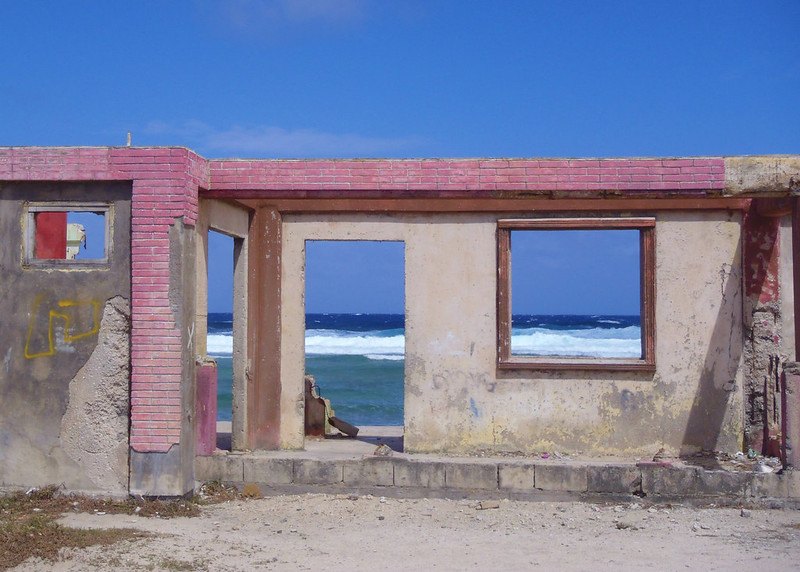
When realists think about climate change at all, it’s often as the precursor for yet another demand for increased military spending. The spectre of millions of climate change refugees voting with their feet and trampling national borders ought to focus the attention of even the most traditionally minded of defence planners and strategic analysts. The wonder is that climate change is not at the forefront of security debates given that the impact it has already had is incontrovertible.
Anatol Lieven, whose latest book, Climate change and the nation state: The case for nationalism in a warming world, was published in March, has the distinction of being a self-confessed realist who takes climate change seriously. Hopefully, the fact that he is suitably hard-headed about the reality of climate change and its rapidly escalating consequences will mean that this book will actually be read by policymakers and the analysts who influence their thinking. Whether it will change their minds is another question, of course. As Lieven points out, the influence of what he calls ‘residual elites’ persists because relatively successful orders are difficult to change.
Unsurprisingly, perhaps, Lieven considers the nation-state to have been the key actor in shaping the modern world—and until recently that’s generally been a good thing. Where he departs from other realist analysts, however, is in his assessment of the nature of security threats in a state-based system. One of the most important—and accurate, in my view—claims that he makes is that ‘[b]arring a full-scale nuclear exchange between the great powers, no security threat in the world today comes anywhere near to matching the threat posed by climate change to existing states’.
While environmentalists may welcome this overdue recognition of the relative importance of the real rather than hypothetical threats to state security, they are unlikely to agree with some of his ideas about how to save the planet—or those bits of it that are still more or less in working order, at least.
His policy recommendations are directed primarily towards policymakers in the Western liberal democracies. Unless they can rapidly address the all too visible consequences of global warming, he claims, they will ‘ultimately face a choice between authoritarian rule and complete political and social collapse’. The only hope in such circumstances is to mobilise the populations of individual countries around forms of progressive nationalism.
In this regard, he is enthusiastic about the potential of a ‘Green New Deal’, albeit one that is dedicated solely to job creation and economic renewal along sustainable lines, and not side-tracked by what he sees as a host of other ‘extraneous causes’. Indeed, the analysis of the domestic political scene in the United States is especially acute: unless Democrats adopt a more inclusive, less condescending political discourse, they are unlikely to win back the members of the white working class who abandoned them to support Trump.
Despite all of the crises and problems that have plagued capitalism over the past few years, it must be reformed rather than abandoned, he argues. The ‘dogmatic free-market capitalist ideology’ promoted under the rubric of the Washington consensus has clearly failed and brought divisive inequality and insecurity in its wake. The only alternative, Lieven argues, is ‘massive state involvement, in terms of direct subsidies, incentives, and compulsions’, to develop a more inclusive and sustainable social and political order.
The most unpalatable part of the book for those of a more cosmopolitan cast of mind is his argument that migration must be tightly controlled if individual national communities are to unite around a common cause. It is no longer outlandish to suggest that mass migration is likely to be the defining issue of this century—its potential effects are already clear in the rise of populist leaders in Europe and elsewhere.
Lieven argues that the support for open borders advocated by Green parties and the left will only ‘feed white chauvinism, tear their societies apart, and make effective action to limit climate change impossible’. I fear he may be right. At the very least, it’s an important reminder that we are already in a world of second-best options and potentially unstoppable tipping points, and not just of the environmental variety.
The overarching argument that only nation-states have the capacity to act in ways that can make a decisive difference is depressingly persuasive. Even more alarmingly, some of the most effective responses have come from authoritarian governments, like China, which has rapidly become the world’s leading investor in renewable energy. Unless democratic governments—like ours—actually recognise the immediacy of the dangers that confront even the seemingly most stable and secure of countries, comforting rhetoric about ‘getting through this’ may no longer cut much ice.
The great redeeming feature of the realist tradition is that its exponents do try to let the facts dictate the argument, rather than vice versa. This doesn’t mean that their conclusions or their arguments are always right—far from it. The Morrison government’s decision to spend money on military hardware rather than climate change mitigation is the latest example of this possibility. But it does mean that realists may recognise the implications of problems that we might otherwise prefer not to think about.
Climate change is the quintessential, implacable and, by this stage, possibly unstoppable threat we all face. The consequences of failing to recognise this unambiguous reality are spelled out in this sensible and sobering book. Even if you don’t like its answers and conclusions, you ought to read it if you’re remotely interested in the future of a world that is increasingly plagued by insecurities and problems our leaders seem incapable of addressing.
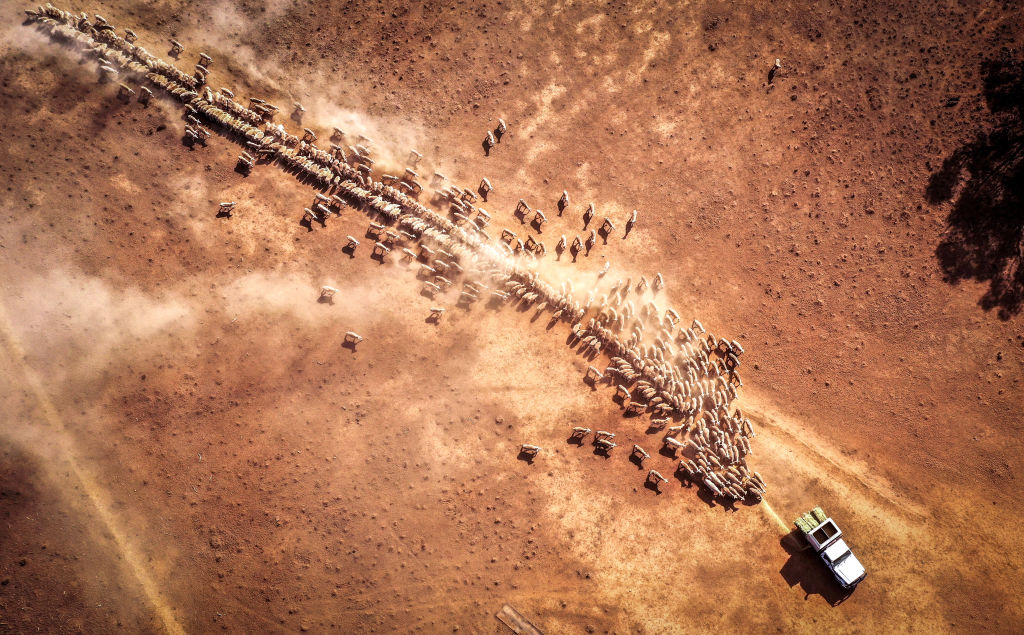
The Australian government’s interpretation of what constitutes a drought must change to cope with the pressures of a more variable and arid climate.
In his foreword to the government’s drought response, resilience and preparedness plan, Drought Minister David Littleproud writes, ‘We have continued to be agile, responding where we need to and how we need to as we wait for the rain we desperately need.’
Drought is a term that has long been used to describe low water availability in Australia. It is a persistent feature of Australia’s natural environment. For centuries the country’s climate has been dominated by variable weather conditions, with cycles of prolonged dry spells followed by flooding. This year, after one of the worst droughts on record, unusually high quantities of rain fell over Australia, causing major flooding across the country.
It would be tempting to argue that, despite climate change, Australian droughts will continue to be cyclical, recurring events.
But in recent years droughts have become more severe and less predictable. The widespread drought across Victoria, New South Wales and Queensland—exacerbated by unusually high temperatures driven by climate change and evolving oceanic weather patterns—led to a noticeable increase in evaporation rates, which reduced soil moisture and dried vegetation. A grim consequence was the intensity of last summer’s bushfires.
Data from the Bureau of Meteorology demonstrates that Australia’s weather is becoming hotter and drier. Parts of the country are becoming more arid, and this is putting more pressure on our economy and infrastructure and on our assumptions about our way of life.
The Australian government has spent billions of dollars assisting regional communities affected by water shortages. The situation seems to have worsened; rains that once could be relied on to provide relief no longer seem to be as consistent.
These conditions raise uncomfortable questions about how Australia will manage future droughts. Words such as ‘extreme’ and ‘recordbreaking’ are now used to describe long dry periods, but at what point does our understanding of what is and isn’t a drought need to change? Does Australia need to define a new climate reality for itself?
Australia is experiencing a widespread drying trend that is blurring the distinction between ‘drought’ and ‘aridity’. A drought is temporary, while aridity is a permanent feature of the natural landscape. Maintaining this differentiation between the two terms is becoming more difficult: some parts of Australia have been in ‘drought’ since 2013.
Drought and aridity constitute different problems that require very different policy responses. Droughts tend to be managed by developing policies with a short-term outlook, such as government handouts to farmers and water buyback schemes. A trend of deepening and broadening arid conditions, however, requires a different set of policies with a long-term view.
The Australian government’s most recent drought plan, released in 2019, includes a future drought fund and national landcare program. These policy settings provide a good indicator of how it’s adapting its thinking about the drying climate.
However, ‘drought’ and ‘aridity’ seem to be used interchangeably in government planning and scientific reports. The government’s drought plan recognises that farmers ‘operate in a largely arid continent’. However, elsewhere in the plan, the word ‘arid’ is replaced by ‘drought’.
The CSIRO’s State of the climate 2016 report predicts that southern continental Australia will spend more time in drought. Although the CSIRO doesn’t clarify over what timeframe this will happen, the report’s conclusion does signal a trend towards a more arid climate, even though the word ‘arid’ is not used once.
The failure to note the difference between drought and aridity can have dire consequences for policymaking and legislative responses to our changing conditions.
The most recent significant example has been the mismanagement of the Murray–Darling river basin, which for decades has suffered from a lack of efficient and productive cooperation between federal and state authorities to deal with consistently low rainfall, high evaporation rates and unsustainable water use.
Of course, drought policy isn’t just influenced by the vocabulary we use. But being clear about what is happening to our climate would go a long way towards improving decision-making and legislation. It would also help narrow the widening gap between Australians’ perceptions of drought and the reality on the ground.
The human and financial costs of Australia’s drying trend will continue to increase in coming years. With one in seven Australian jobs dependent on farming, the economy relies heavily on agriculture. This is reflected in unsustainable government policies that still prioritise an increase in the nation’s agricultural output.
It’s becoming more important than ever for Australians to think now about what a drying climate means for them, their jobs, their communities and their futures. If our perception of drought doesn’t change, we will increasingly struggle to cope with the demands of a more arid climate.
Australia can’t look only at how climate change is affecting water availability and drought. To properly address the effects of climate change, and the impact of low water availability on our economy and way of life, environmental management will need to become a core focus of government policy.
The government’s most recent drought response plan suggests this is starting to happen, but the measures and programs being implemented are not the full solution.
We can’t focus simply on reacting to these worsening conditions, especially if our response addresses only one part of a much bigger problem. We need a proactive policy structure and debate which engages with the direct effects of climate change, not just drought.

Mark Beeson’s recent piece on the Covid-19 pandemic, ‘The revenge of Gaia?’, was a bewildering read.
Beeson suggested that Covid-19 is, like climate change, ‘a product of changes in the natural environment’ and ‘partly a consequence of human activity and our collective impact on the biosphere’.
Of course, the pandemic we’re facing is partly a consequence of human activity, but it would be more appropriate to identify the role played by unregulated ‘wet markets’ where anything and everything is up for consumption. There was once a time when cross-species outbreaks of this kind would principally kill local residents before petering out, but in our globalised world they pose a threat to us all.
The common thread linking the novel coronavirus and climate change is actually one that Beeson neglects to address. As we’ve seen, the response to Covid-19, which Beeson considers doesn’t go far enough, is already having dramatic economic consequences. Virtually overnight, many thousands of Australians have found themselves out of work, including many who had been in full-time employment for their entire adult lives.
The health crisis is closely associated with an economic crisis, and that’s the connection that should be drawn with climate change. It will always possible to ‘do more’ to combat climate change, but the economic consequences for many working Australians would be catastrophic. As with the response to Covid-19, a responsible government needs to balance the various factors involved. The government could lock down the entire country overnight to minimise the further spread of Covid-19, but at the cost of even more extensive damage to the economy. Similarly, Australia could pursue more radical measures to reduce CO2 emissions, but that would come with considerable economic costs, with enormous implications for working Australians.
The Australian government is responding very well to the enormous challenge of Covid-19, better than most others. In a perfect world, Australia should be prepared for everything and instantly able to implement policies that solve problems that arise. In the real world, though, unexpected developments can knock even the best prepared off balance, and trade-offs need to be made between different priorities.
This is the approach underpinning the government’s response to both Covid-19 and climate change. It aims to strike a balance between managing risks and mitigating the costs of those actions in order to maintain a strong economy and protect the livelihoods of working Australians.
Covid-19 demonstrates that taking extreme measures on climate change or on anything else, including pandemics, will have severe consequences. Australians are seeing this in the economy’s response to the health crisis, in the failed businesses and the impact on those who are most vulnerable to an economic downturn. One is left to wonder what might happen if extreme climate change measures were implemented without regard to the economic consequences.
Australians now know the consequences of unbalanced reactions to developments that are effectively outside our control. They are more likely to support taking a balanced and measured approach to climate change because they now further recognise the consequences of unbalanced actions.
Beeson concedes that China’s government is ‘unaccountable and authoritarian’, but he says it has demonstrated what determined leadership can do. He considers that as a result of the crisis, ‘America’s political and economic system may be thrown into sharp and unflattering comparative relief with China’s.’
That’s a bold claim, considering the evidence that the regime’s attempt to cover up the outbreak in its early stages was a major contributor to its spiralling out of control—not to mention more recent signs that the official statistics on China’s infection rates are being falsified to put things in the best possible light. One can also consider the stories in the Nine media group that Chinese enterprises had been engaged to ransack Australian caches of medical supplies, including surgical masks, thermometers, antibacterial wipes, hand sanitisers, gloves and Panadol, before the pandemic reached Australian shores.
Now we see China pledging support to the Middle East and elsewhere, including donations of medical supplies, hoping to capitalise on the pandemic to win new diplomatic allies. One is left to wonder about the source of those supplies that are now being so generously donated.
Even when considering the deficiencies in the American response, I, like most Australians, would always favour a government that is committed to openness and transparency, that would not deliberately falsify figures, and that would not use a health crisis for self-serving geopolitical ends. It goes to show that, notwithstanding rhetoric about building ‘a community of common health for mankind’, the competitive struggle between nations continues unabated. Maybe the ‘eye-wateringly expensive military hardware’ that Beeson derides continues to be necessary after all.
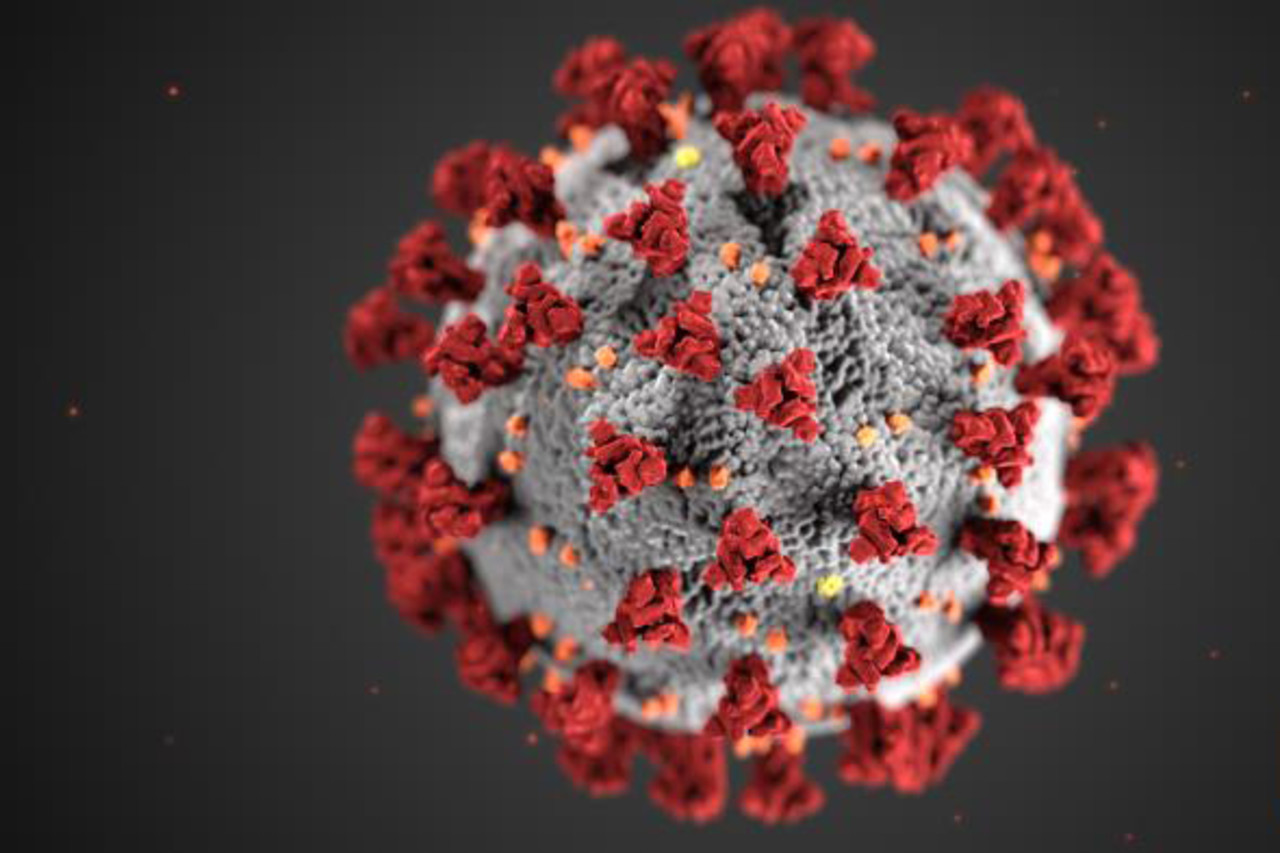
Even the most hard-headed of strategic analysts would have to concede that we are now facing a direct and very real threat to our individual and collective security of a sort and severity that we have not seen before in our lifetimes. Ironically enough, it turns out that there really was a threat from China after all, just not the one we have spent billions of dollars preparing for.
The old cliché about generals—not to mention policymakers and their advisers—has never looked more apt: they really have been readying themselves to fight the wrong war. None of the exotic and eye-wateringly expensive military hardware that strategic types claim is vital to keep us safe can protect us from an invisible enemy that isn’t easily deterred.
While there may still be some debate about the exact origins of Covid-19—outside of the ranks of some of the more conspiratorially minded denizens of the Twittersphere, at least—it seems relatively uncontroversial to suggest that like other new viruses it is a product of changes in the natural environment. As with climate change, it is partly a consequence of human activity and our collective impact on the biosphere.
A still surging global population is causing new forms of interaction between people and animals, allowing pathogens to cross the species barrier with devastating consequences. Ebola, SARS and avian influenza all seem to have had similar origins, and all went on to kill human beings in significant numbers. They were not, however, on the apocalyptic scale threatened by Covid-19, nor did they threaten the privileged populations of most of the Western world.
Nevertheless, these earlier episodes ought to have provided the proverbial wake-up call and warning for political and strategic elites everywhere. Rather predictably, however, potential lessons went unlearned and little effort was made to prepare for the possible outbreak of a pandemic that might prove more pervasive, virulent and deadly.
Even when the novel coronavirus crisis was clearly gathering pace in China, policymakers in the West, predictably led by US President Donald Trump, remained in furious denial about the scale and immediacy of the dangers. Australia’s response is gradually ramping up, but it is still proving difficult for policymakers to grasp the enormity of the threat and to take actions that will undoubtedly transform the Australian way of life.
It’s easy to be wise after the event, no doubt. But many people have been warning of the risk of a global pandemic for years, with no perceptible impact on public policy. The lack of preparedness of health systems around the world is being brutally exposed, and not just in the so-called developing world either.
The United States has the worst of all possible worlds: a preposterously expensive and shamefully inadequate health system, especially for the swelling ranks of the working poor. America’s political and economic system may be thrown into sharp and unflattering comparative relief with China’s, which has demonstrated what determined, albeit unaccountable and authoritarian, leadership can do.
The Covid-19 pandemic consequently is providing the biggest shock to the international order since World War II. There’s nothing quite like the threat of one’s imminent demise or the overnight evaporation of economic security to focus the attention. No doubt life will go on, but it may never be quite the same again, and people will understandably want to know why it happened and why we weren’t better prepared.
Exactly the same questions could and should be asked about climate change. What makes this crisis different, of course, is the breathtaking speed with which it has unfolded. In the process it has overturned many of our most deeply held assumptions about the stability and predictability of life in even comparatively well-run polities such as our own.
If this crisis does nothing else, it ought to dramatically bring home to us how deeply interconnected we are with the natural environment upon which we ultimately depend. It is also clear that this is an essentially interactive process: if we damage or abuse the environment too much, the results of those actions pose not just a niche ethical dilemma for inner-city liberals, but a direct threat to human life everywhere. Wealth and power are no protection, even if they ensure the best medical care money can buy.
Is this the ‘revenge of Gaia’, as the prominent and controversial environmental scientist James Lovelock predicted in 2006? Perhaps not. But even those who don’t believe that the earth is a ‘whole system of animate and inanimate parts’ locked in mutually constitutive interdependence may have to start thinking about our relationship to the planet in new and more sustainable ways.
If we can’t organise ourselves and lighten our growing burden on the natural world, nature may do it for us. If that’s not a security dilemma, it’s hard to know what is.
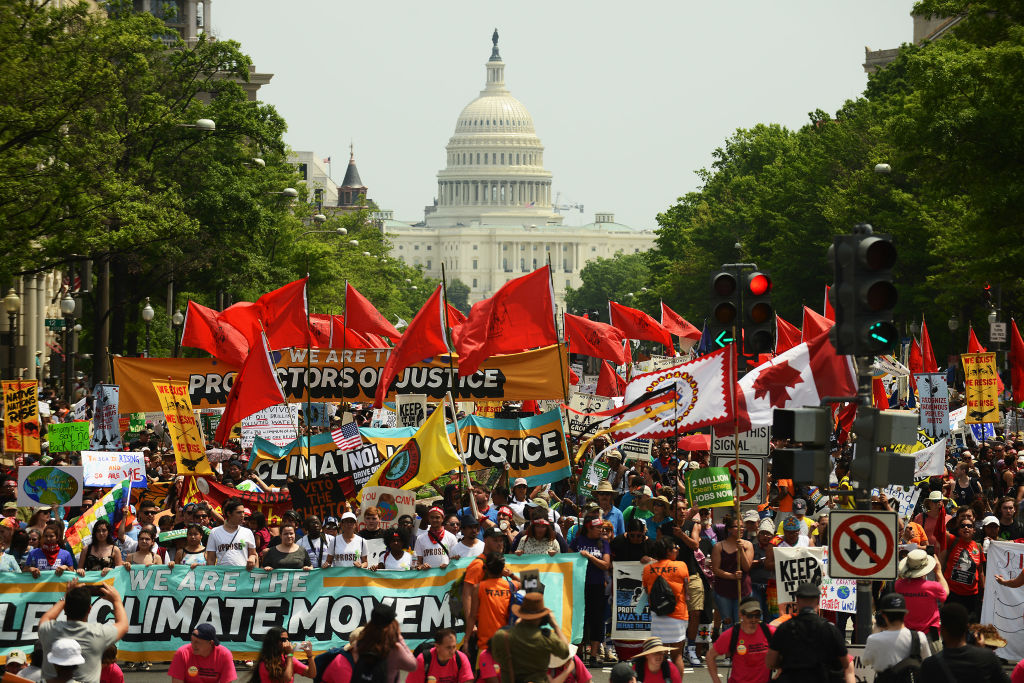
In 1992, Francis Fukuyama’s The end of history and the last man declared liberal democracy and capitalism to be the pre-eminent systems of government and the pinnacle of social evolution. This was it. Liberal democracy and capitalism as practised in the West was as good as we could get.
Fast-forward a little over a quarter century and Fukuyama may wish he’d never made that claim. He can hardly be blamed for it though, particularly because he wasn’t alone in thinking it. The evidence for that can be seen in the decades of drift Western democracies engaged in from the end of the Cold War in the early 1990s. They became internally focused and preoccupied with day-to-day politics, while larger opportunities went unmet and long-term risks built up all around them.
Now, these countries, Australia among them, find themselves in what is arguably the most complicated strategic environment they have ever faced. That may seem a big call given the scale of World Wars I and II, or the Cold War, with its ever-present threat of nuclear annihilation.
But climate change, unchecked, also threatens civilisation as we know it. And it isn’t just a possibility: it’s happening. And yet it’s not the only complex strategic challenge that liberal democracies now face.
China’s rise poses a challenge to Western planners that is in some ways familiar—an authoritarian state in ideological competition with liberal democracy. But the world trades with China on a scale that it never did with the Soviet Union. It has made us all richer, but it also exposes us to Chinese influence and adds a layer of complication to balancing economic interests with national values and international norms.
But wait, we’re not done yet. Technological advances are outpacing the capacity of society to adapt. One possible outcome is winding up with a world in which there isn’t enough work for people to do—and while that doesn’t have to be a bad place to be, it does need extensive forethought on alternative economic models that don’t depend on people working for a living, or else we could be headed for a dystopian future of mass unemployment and inequality.
This is a rare, if not unprecedented, convergence of major trends. It remains to be seen if the Western democracies can adapt their traditional, hierarchical and risk-averse bureaucracies to guide their societies through it.
To be fair, the US, Australia, and their democratic partners are not the only countries facing these challenges. These are global issues with worldwide ramifications and every country has a stake. But until recently, the Western democracies were largely alone in the wealth and capability they could bring to bear to seize opportunities and solve problems. And that’s the real tragedy behind this unprecedented strategic environment we face—that it didn’t have to be this way.
Circling back to climate change as an example, it’s possible to imagine how the advanced democracies, in many ways the most capable actors in the world, could have worked together to take the lead on addressing it far earlier. That they chose not to do so, especially in their moment at the ‘end of history’, has been a dereliction of duty and opportunity for which current and future generations will pay the price.
Bringing liberal democracy out of its funk needn’t require wholesale change, however. Relatively easy reforms could create enough space for some long-term ambition, while also helping to change the conversation between citizen and government.
First, we need to bring optimism back into the narrative. Not the sort of superficial, throw-away optimism that the political establishment is often guilty of using, but an optimistic agenda connected with tangible, specific and inspirational national and international goals that transcend individual life and that citizens can connect with.
Second, liberal democracies will need to engage in hard choices. In a more crowded and disruptive world, policymakers will increasingly need to get comfortable with turning off existing activities so resources can focus where they have best effect. Opportunity cost needs to become a stronger feature of planning, while strategic planning in government needs to be strengthened and given real authority.
Third, the liberal democracies have a competitive advantage that is uniquely available to them: alliances and partnerships based on more than convenience. Taken together, the liberal democracies have formidable resources, talent and authority. Faith in collective action could be restored if ‘coalitions of the willing’ among the liberal democracies come together on specific grand and inspirational challenges.
Finally, but importantly, we need to look for ways to bring citizens into decisions of government beyond the election cycle. There are a number of possible models for this—some jurisdictions are experimenting with citizens’ juries, others have involved voters directly in questions on budget and service delivery. The most intriguing expose citizens to the trade-offs inherent in government and allow them ownership of specific decisions.
Done right, this can build citizen support for new revenue and activities, freeing up government to be potentially more adventurous, and it can build trust between the government and the public. It could turn one of democracy’s current weaknesses—the fraying relationship between government and citizens—into its greatest strengths.
Sorry, no posts matched your criteria